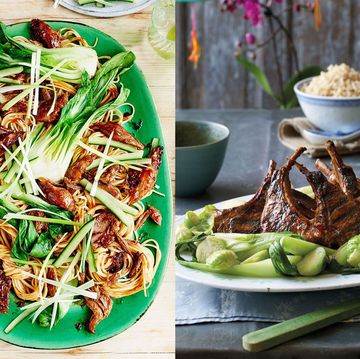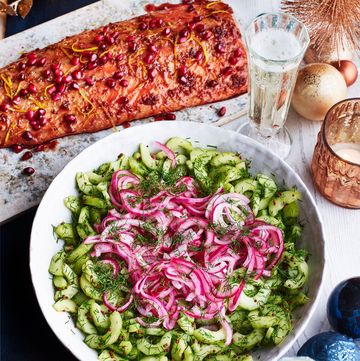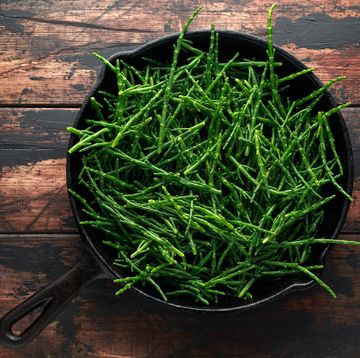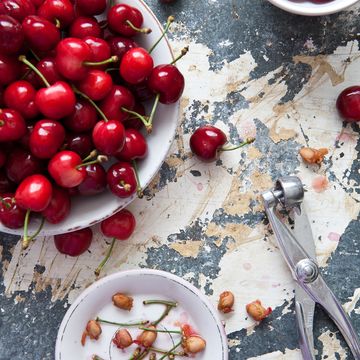What we're cooking in January
Make the most of winter produce with these mouth-watering seasonal recipes

It's the month of dry January and Veganuary, but have you considered eating with the seasons? It might come as a challenge at first, especially as produce availability can be limited wintertime, but in doing so you're heading towards a more sustainable lifestyle.
By eating with the seasons, you'll be rewarded with produce that's at its best, meaning it will be fresher, have more nutrients, and taste fantastic (if prepared correctly, of course). Plus, it will help you to become a better cook, as you'll be experimenting with fruits and vegetables you might not have ordinarily bought.
Ready to get cooking? Here are some of our favourite recipes using ingredients available in January in the UK.
What fruit and vegetables are in season in January?
Apples - From the 23 varieties available in the UK, Royal Gala, Jazz, Cox, Bramley and Braeburn are the most commonly found. Their sweet, crunchy taste goes well in not only sweet dishes but savoury ones too. If you're not already skilled up, learn how to prep apples properly, so you can make the most of this tasty fruit.
Beetroot - We love using beetroot in our recipes, as it adds a beautiful vibrant colour plus a whole load of nutrients. Beetroot's earthy flavour works well with creamy goat's cheese in a salad or pickled for a tangy accompaniment to your cheeseboard. If you're not sure how to cook fresh beetroot, here's how to roast them to bring out their naturally sweet taste.
Brussels Sprouts - Not a fan of Brussels sprouts? It's likely you've never tried them when prepared properly. This cruciferous vegetable has an almost nutty flavour and adds lovely texture to dishes. If you're worried you'll overcook your sprouts, why not shred them raw into salads for a fresh bit of bite?
Butternut Squash - This winter squash is one of the most popular varieties and has a wonderful sweet and nutty taste when cooked. We love to roast it in a baking tray with just some salt and pepper, add chunks into risottos or blitz it into a creamy soup.
Celeriac - This knobbly root veg might not look the prettiest but once you trim and chop off its exterior, you're left with a versatile and flavoursome vegetable. It tastes very similar to celery but also has a nutty-like quality to it. Enjoy it grated and eaten raw in salads, roasted in a traybake, added into a stew, blitzed into a soup or mashed to bring out its sweetness.
Kale - This leafy vegetable benefits from being cooked or baked in order to tenderise its leaves. Try massaging kale with a dressing or oil to soften it slightly and be sure to remove the tough stalk (by pulling the leaves down and away from you while holding the stalk end) before cooking.
Leeks - Leeks have a wonderfully sweet onion flavour, which makes them incredibly versatile. We love to sauté, roast, confit and char them, but don't forget to prepare them properly to ensure any dirt (which gets trapped within its layers) is washed away before cooking.
Mushrooms - From the small enoki variety, to the large portobello kind, mushrooms are one of our go-to ingredients. They add a hit of umami to any dish, and are highly absorbent when dressed with marinades and sauces. They have a naturally earthy flavour and the larger varieties (like portobello) have a meatiness that can work as a substitute to meat. They do require some preparation, so do read these top tips to remove dirt and get the most out of your mushrooms.
Pears - January is the last month to enjoy fresh UK pears, so make the most of this sweet and juicy fruit before it's gone. Whether you're poaching pears or adding them into a loaf cake, pears are the perfect ingredient for a comforting winter pudding. Pears are also one of the few fruits that improve in flavour and texture once picked, so make sure you buy them under ripe to soften at home.
Savoy cabbage - The strong leaves on a savoy cabbage make it ideal for adding some crunch or bulk to variety of meals. We particularly love this type of cabbage shredded and fried with butter and salt, although the robust leaves mean it can be stuffed and rolled into parcels too.
Swede - Called neeps in Scotland, swedes are at their best in January. With a naturally sweet flavour, you can boil and mash them with salted butter as a delectable side dish, or alternatively add it into soups, stews or traybakes.
Celery, chicory, Jerusalem artichokes, onions, red cabbage, salsify, spring greens, spring onions, turnips and white cabbage are also in season in the UK in February.
Mel is the Senior Food & Drink Writer for Good Housekeeping UK, covering all the delicious new product launches that come her way, writing about food and drink topics, and curating gift guides for the best foodie products to buy. Alongside that, she can be found developing and creating cocktails for GH and holds her WSET Level 2 in Wine and Spirits. She was part of the Good Housekeeping Institute food testing team for over four years before moving over to the digital side, so knows a thing or two about great food products. You'll find her scouring the supermarket shelves in her spare time for new and exciting ingredients to experiment with in her kitchen.


15 Best Autumn Baking Recipes

Seasonal recipes for August

Get 20% off Gozney’s top-scoring pizza oven
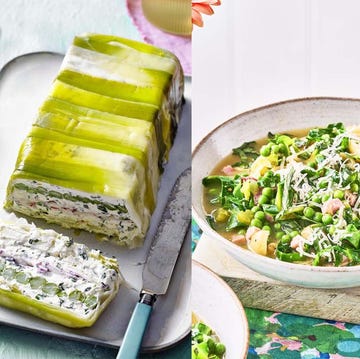
Our top 20+ spring recipes




















